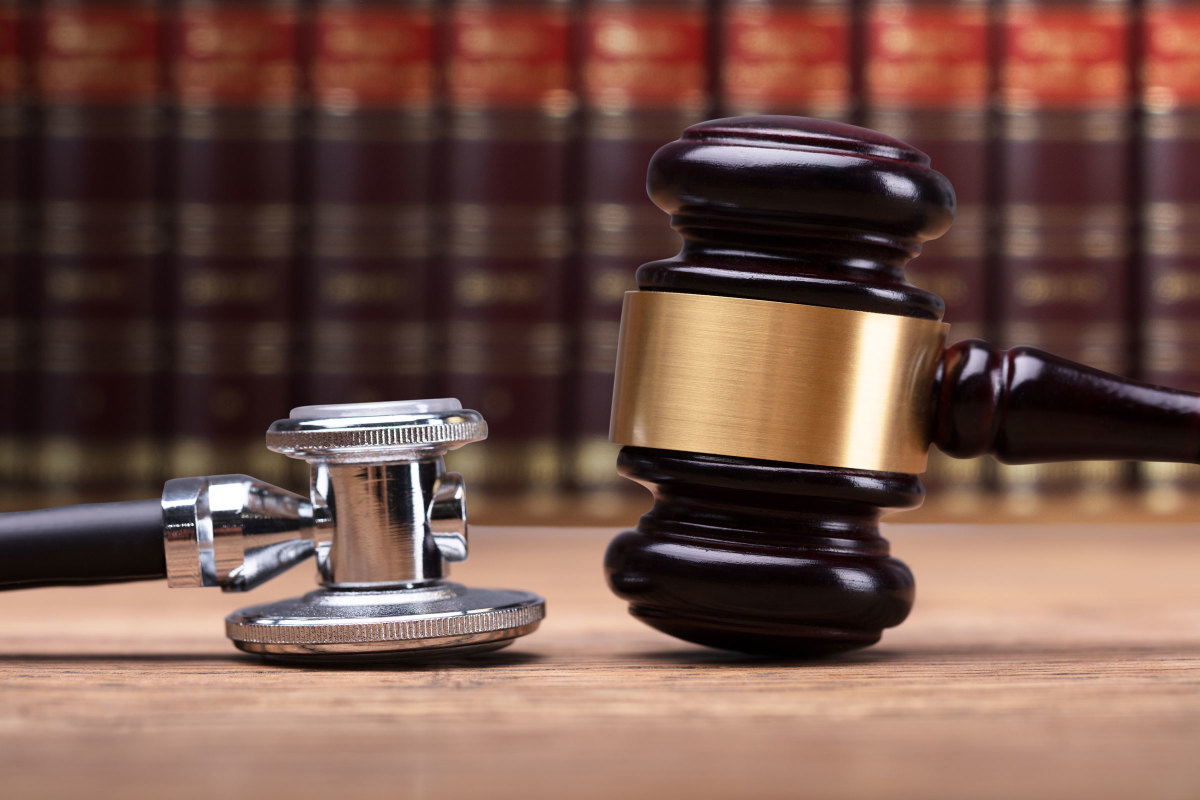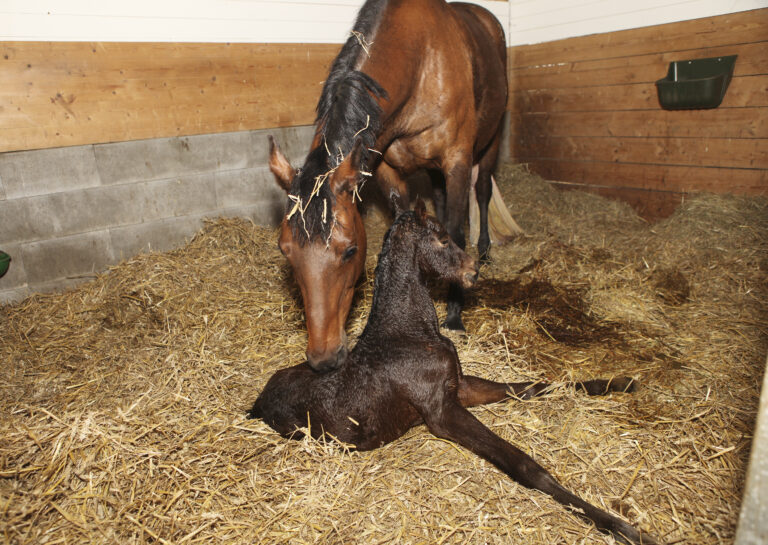
All players in the equine industry will at some point encounter the scary words “infectious disease.” Given the extensive travel of horses nationally and internationally, a veterinarian’s failure to consider and implement a response protocol can take a single infection and rapidly morph it into a very public event with attendant legal liabilities.
A prime example occurred in Weld County, Colorado. In July 2018, a horse entered Colorado from out of state without a current Coggins. Its initial test result, received August 24, 2018, was positive for equine infectious anemia (EIA), with another positive confirmation received August 28. Even though the facility was placed under a quarantine, the Colorado Department of Agriculture reported that as of September 7, 2018, more than 240 animals passing through the same facility had been on the quarantined premises during the same time as the infected animal and had dispersed throughout the United States.
While equine infectious anemia can be passed through blood-sucking insects such as flies and mosquitos, the potential exposure quickly extended into nine additional Colorado counties as well as 20 other states receiving those horses before the positive exposure had been identified. Although no identified horses have yet tested positive, the rapid spread of the exposed horses is an important indicator of the potential for a fast-moving, wide-spread disaster.
Your Responsibilities at Home
What are “infectious diseases,” and what roles do the treating veterinarian, facility manager or event manager have in checking for, identifying and handling exposure risks?
Equine infectious diseases are rapidly spread, either from horse-to-horse contact, horse-to-human-to-horse contact (or through other fomites) or through disease-carrying vectors such as flies and mosquitos.
Many of these diseases are preventable through standard vaccination protocols, including the four primary core vaccinations identified by the American Association of Equine Practitioners (AAEP): Eastern/Western equine encephalomyelitis (EEE/WEE), rabies, tetanus and West Nile virus (WNV). Core vaccinations are strongly recommended where they share four dramatic characteristics relative to the risk of the vaccine: 1) the disease is highly infectious; 2) the disease is endemic to a particular region; 3) the disease poses a risk of severe illness or death to the horse; and/or 4) the disease poses potential public health risks.
These four core vaccines have been tested for their efficacy and safety and found to exhibit a high enough level of patient benefit versus low enough level of risk to justify their use in the majority of horses. Thus, equine veterinarians through AAEP guidelines are encouraged to vaccinate their equine patients annually with each of these core vaccines.
Should owners refuse these recommended vaccines for their horses, practitioners are encouraged to secure a signed waiver confirming the owner’s informed consent as to the risks of the disease and the purpose of the vaccine, and signifying the owner’s legal assumption of risk from failure to vaccinate.
Beyond the above four core exposures, “infectious disease” also covers those diseases that share dramatic and foreseeable consequences if treatment and quarantine procedures are not immediately implemented when diagnosed. These include, but are not limited to, equine infectious anemia (EIA), equine influenza virus (EIV), equine herpesvirus (EHV), strangles, and more recently, the tick-borne virus piroplasmosis.
Most industry professionals intellectually understand the importance of guarding against infectious diseases, but they drop the ball when confronted with day-to-day realities.
Take for example the stable owner who allows a longtime boarding client to bring in a new horse without current health papers on the representation that “all is well and the papers will follow shortly.” If the horse presents with an infectious disease, its mere entry onto the premises creates the initial exposure harm, either between horses or from the infected horse to its handler to other horses.
Thus, in a boarding barn context, all new horses should be kept in a separated quarantine area until either a) current health certificates, vaccination records and Coggins tests have been verified; or b) a minimum of 2-3 weeks of quarantine in a segregated area has passed. (Note that 21 days is approximately the longest incubation period for strangles.)
In particular, stable owners and veterinarians must exercise heightened caution and implement even stricter protocols when allowing rescue horses or horses purchased from “kill lots” into the barn area. In many instances, these horses have been exposed to a wide variety of contagious diseases before arriving at the barn; thus they need the highest level of precautions put into place when admitting them to a new barn.
Even if new horses arrive with current health papers, it is still advisable to quarantine the animals for a minimum of 2-3 weeks before moving them into proximity with the other horses housed at the facility, according to the AAEP.
All horses that have been off the property or are new to the property should have their temperatures taken twice daily for a week upon their return to—or arrival at—the farm.
Horse Shows/Events
Similarly, registration at a show or equine event can be hectic and rushed, with participants crowding around registration desks manned by volunteers attempting to check participant names, waivers, and horse Coggins and health certificates.
Often, a thorough and detailed review of the paperwork is sacrificed for speed. But understand that event sponsors, show veterinarians and show volunteers bear the responsibility to ensure that all paperwork is current.
It is the event sponsor’s responsibility to provide a safe, disease-free environment for competition. If an owner brings a competition horse to an event without the requisite health papers, that horse should not be allowed on the premises until the required paperwork is in hand. It is the legal responsibility of the event sponsor and its agents to deny entry to any horse lacking current health records and paperwork.
It is the legal responsibility of the owner or trainer to secure and present that current paperwork as a condition to participation in the event.
What if the papers were inadvertently forgotten but can be secured soon? If such paperwork can’t be secured immediately, the event sponsor must either reject the application or put it on “hold,” identifying a separate quarantine area where the horse can be placed until health verification is received. Any deviation from this standard rule exposes the event sponsor and its agents to a claim of negligence should an infected horse be allowed into proximity with healthy horses who later fall ill to the same disease.
What other steps can a clinic or stable implement? Fortunately, we have access to a number of informative treatises on this important subject that generically suggest the following protocols:
1. VACCINATIONS: Ensure that all horses involved are current on the core vaccines, additional vaccines recommended for your particular area, and/or the competition areas where the horse will travel.
2. CLEAN STALLS AND BEDDING: Ensure that all horses are placed into recently cleaned and sanitized stalls with fresh bedding.
3. KEEP DETAILED RECORDS: Know the average body temperature of horses in your care and monitor temperatures twice a day at home and when traveling. Often, an elevated temperature is the first sign of illness.
4. PRACTICE GOOD HYGIENE: Be sure you and your technicians or employees wash their hands between handling horses. As in a hospital, consider placing hand sanitizer stations throughout the clinic and the barn, and instruct your employees to use them frequently.
5. MINIMIZE NOSE-TO-NOSE CONTACT OPPORTUNITIES: Attempt to separate horses to prevent nose-to-nose contact. Avoid the use of community equipment and water sources, including hoses and buckets.
6. IMPLEMENT QUARANTINE AREAS FOR TRAVELING AND INCOMING HORSES: Even with current paperwork, it’s a good idea to create a separate quarantine area for new incoming horses and horses returning from a competition or event. Resident equids returning to their home stable from an event should be fully isolated or at least have their temperatures checked twice daily for at least 1 week to allow early detection of disease. New entries to stables where there are long-term resident equids should be isolated from the resident equids for 2-3 weeks and monitored for signs of contagious disease. During this time, equipment should not be shared among new and resident equids and temperatures should be checked twice daily to allow for early detection of disease.
Additional guidelines can be identified through the following:
1. Equine Disease Communication Center (EDCC): equinediseasecc.org. This site was created to track and report via an automatic alert system the threats and outbreaks in horses by region. This site should be consulted before traveling to any event.
2. AAEP Biosecurity Guidelines: aaep.org/guidelines/infectious-disease-control. Written and updated by the AAEP Infectious Disease Committee, these guidelines suggest that veterinarians are expected to recommend measures for prompt containment of infectious disease that involve isolation and treatment of affected individuals while preventing spread of disease to the unaffected population. The Guidelines emphasize the importance of a “first response” plan with details.
3. EDCC National Equine Health Plan Roles & Responsibilities Guidelines: equinediseasecc.org/national-equine-health-plan and equinediseasecc.org/roles-and-responsibilities
These two publications outline the suggested roles and responsibilities of all relevant stakeholders, including government health officials, treating veterinarians and owners in identifying, addressing, containing and eliminating the spread of equine contagious diseases.
These provided protocols should be reviewed and implemented by all equine veterinary clinics as well as presented to the clinic’s clients, either in pamphlet or educational symposium format.
Take-Home Message
The veterinarian is the most qualified person to guide an outbreak prevention and control plan. Each infectious disease outbreak is unique, and an existing plan might require modification depending on circumstances.
A frank and truthful informational exchange between clients and veterinarians is essential. Prompt and honest communication will significantly reduce the liability exposure of both the veterinarian and the owner of the infected animal(s).








